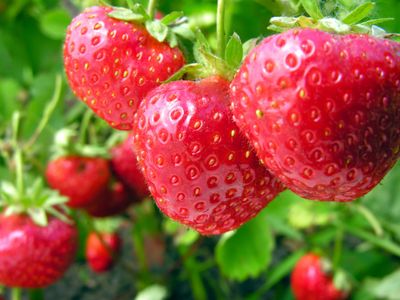About Strawberry Chill Hours
Strawberry chilling is important. If the plants don’t get enough chill hours, the flower buds may not open in the spring or they may open unevenly, resulting in a reduction in yield. The production of leaves may be delayed as well. The traditional definition of a chill hour is any hour under 45 degrees F. (7 C.). That said, academics quibble over the actual temperature. In the case of chilling requirements for strawberries, the period is defined as the number of accumulated hours between 28 and 45 degrees F. (-2 to 7 C.).
Strawberries and Cold
Strawberries planted and cultivated outside generally get enough chill hours naturally through the change of seasons. Commercial growers sometimes grow berries outside where they begin to accumulate chill hours and are then stored with supplemental chill. Too much or too little supplemental chill affects how the plants will produce. So chilling strawberry plants has been studied to see exactly how many hours are needed for a particular variety. For instance, the day neutral ‘Albion’ needs 10 to 18 days of supplemental chill while the short day cultivar ‘Chandler’ needs less than seven days of supplemental chill. Other growers cultivate strawberries in greenhouses. Fruit is forced by providing heat and long-day illumination. Before the berries can be forced though, the dormancy of the plants must be broken with adequate strawberry chilling. In lieu of enough chill hours, plant vigor, to a certain extent, can be controlled by early season flower management. That is, removing flowers early in the season allows the plants to develop vegetatively, making up for a lack in chill hours.
